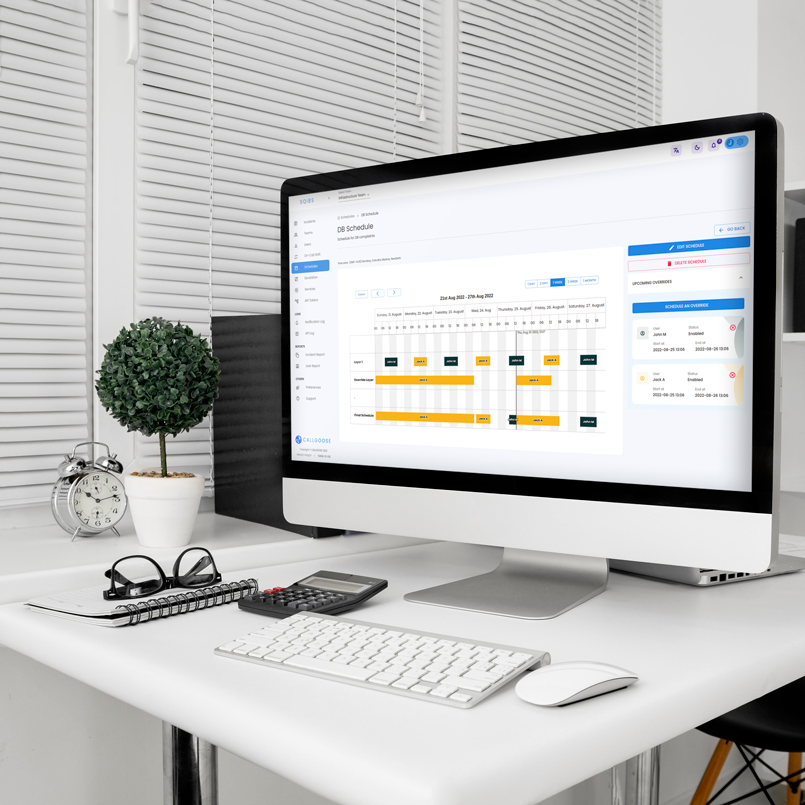Integrations
Zendesk
Integration of Zendesk with Callgoose SQIBS
Overview
This document provides a detailed guide to integrating Zendesk with Callgoose SQIBS for Event-Driven Automation, Incident Auto Remediation, and support ticket lifecycle automation. The integration allows Zendesk to send ticket updates to Callgoose SQIBS via webhooks, triggering automation workflows. Callgoose SQIBS can then resolve or update the ticket in Zendesk and notify the end user accordingly.
Prerequisites
- Zendesk Account: Admin access to create webhooks, triggers, and API tokens.
- Callgoose SQIBS Account: Access to configure API filters and automation actions.
- API Token and Endpoint: Required for bi-directional communication between Zendesk and Callgoose SQIBS.
1. Obtain API Token and Endpoint Details in Callgoose SQIBS
1.1 Generate API Token:
1.2 Find API Endpoint:
2. Configure Webhook in Zendesk to Trigger Callgoose SQIBS Automation
2.1 Create a Webhook
- Go to Admin Center > Apps and Integrations > Webhooks
- Click Add Webhook
- Set the webhook details:
- Name: Callgoose SQIBS Webhook
- Endpoint URL: https://<your_callgoose_instance>/sqibs/integration_endpoint
- Request Method: POST
- Request Format: JSON
- Authentication: Leave empty or include token if required by Callgoose
- Save the webhook
2.2 Create a Trigger
- Go to Admin Center > Objects and Rules > Triggers
- Click Add Trigger
- Set conditions (e.g., ticket is created or priority is high)
- Under Actions, choose Notify Webhook and select the webhook you created
- Configure JSON payload, for example:
{
"ticket_id": "{{ticket.id}}",
"subject": "{{ticket.title}}",
"description": "{{ticket.description}}",
"priority": "{{ticket.priority}}",
"requester_email": "{{ticket.requester.email}}"
}
- Save the trigger
3. Generate API Token in Zendesk
To allow Callgoose SQIBS to update Zendesk tickets:
- Go to Admin Center > Apps and Integrations > APIs
- Enable Token Access and generate a new API token
- Use this token with basic auth:
- Username: your_email/token
- Password: your_token
4. Configure Callgoose SQIBS to Process Zendesk Webhook Payloads
4.1 Create API Filters
- Go to the API Filters section in Callgoose SQIBS
- Create a filter using the JSON payload structure
- Example:
- Payload JSON Key: priority
- Key Value Contains: ["high"]
- Map Incident With: ticket_id
- Incident Title From: subject
- Incident Description From: description
4.2 Run Automation Actions
- Associate automation playbooks with the incidents created
4.3 Update Ticket in Zendesk via API
- API Endpoint:
PUT https://<your_subdomain>.zendesk.com/api/v2/tickets/<ticket_id>.json
- Headers:
Content-Type: application/json
Authorization: Basic <base64("your_email/token:your_token")>
- Payload:
{
"ticket": {
"status": "solved",
"priority": "normal",
"comment": {
"body": "Issue resolved by Callgoose SQIBS automation."
}
}
}
5. Notify User via Public Comment in Zendesk
- Use the same ticket.update API with a public comment to notify the requester.
6. Testing and Validation
- Create a test ticket in Zendesk
- Confirm the trigger fires and webhook reaches Callgoose SQIBS
- Validate that the automation runs and the Zendesk ticket is updated
- Ensure the requester receives a public comment or notification
7. Troubleshooting
- Validate webhook and trigger are configured and active
- Check API logs in Callgoose SQIBS for incoming payloads
- Use Zendesk API activity logs for outgoing webhook monitoring
- Confirm API token format and base64 encoding are correct
8. References
- Zendesk API Docs
- Callgoose SQIBS API Token Documentation
- Callgoose SQIBS API Endpoint Documentation
- API Filter Instructions and FAQ
- How to Send API

